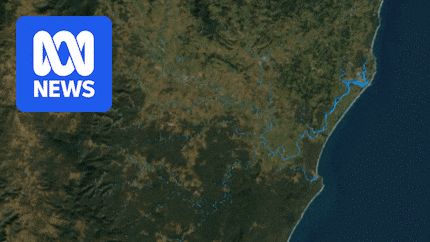
In a groundbreaking effort to enhance flood management in one of Australia’s most flood-prone regions, the Commonwealth Scientific and Industrial Research Organisation (CSIRO) has developed a highly detailed virtual model of the Richmond River catchment in northern New South Wales. This innovative model promises to revolutionize how authorities approach flood mitigation, offering a new level of precision in understanding and preparing for flooding events.
The CSIRO’s model represents an unprecedented achievement in flood research, mapping the 7,000-square-kilometre catchment with remarkable detail. According to Jai Vaze, a senior principal research scientist leading the project, the model is a comprehensive mathematical representation that incorporates millions of data inputs. These inputs include critical flood-related factors such as topography, hydrology, evaporation, soil types, and vegetation.
Revolutionizing Flood Mitigation
Dr. Vaze emphasized the necessity of a catchment-scale model to reliably evaluate flood-mitigation scenarios.
“To look at any flood-mitigation scenarios reliably, whether it will work or not, you need a catchment-scale model,”
he stated. The model has already garnered international attention, with one of the three independent experts reviewing the report suggesting it could serve as a template for future large-scale flood studies globally.
How the Model Works
The model’s development was no small feat, requiring over two years of meticulous work. It simulates how flooding unfolded over a six-week period in 2022, using Bureau of Meteorology rainfall data refined to hourly readings localized to one-square-kilometre grids. Advanced technologies like sonar and Lidar were employed to create bathymetric maps and gather high-resolution data on river depths and riverbed undulations.
With its pinpoint accuracy, the model can test various flood mitigation strategies, including hard infrastructure like levees. Dr. Vaze noted that the project marks a shift from reactive flood responses to proactive planning, aiming to mitigate the effects of future floods.
Historical Context and Financial Implications
The Richmond River catchment has a long history of devastating floods, with the 2022 Northern Rivers floods alone costing the NSW and federal governments $880 million in reactive solutions. These included relocating people from flood plains and retrofitting homes. An additional $150 million has been earmarked for resilience measures, such as upgrading pumping stations and improving flood channels.
Local advocacy groups, like the Lismore Citizens Flood Review Group, have been instrumental in pushing for comprehensive flood management strategies. The group’s collaboration with Dr. Vaze has been pivotal in integrating local knowledge into the model, enhancing its applicability and effectiveness.
Community and Expert Reactions
Community members like Beth and Richard Trevan have expressed optimism about the model’s potential to secure funding for flood-mitigation projects.
“He is totally committed to the region and solving the problem,”
Beth Trevan said of Dr. Vaze, highlighting his dedication to the project.
However, not everyone shares this optimism. Whian Whian resident Patrick Tatam, who has been monitoring rainfall data for over a decade, remains skeptical about the model’s ability to protect downstream communities.
“Having seen the strength of the water as it comes down this creek, I’d suggest there is very little that is going to impede that flow,”
he remarked.
Looking Forward
The CSIRO’s model represents a significant advancement in flood management, offering a new tool for authorities to plan and implement effective mitigation strategies. As the region braces for future flooding events, the model’s insights could prove invaluable in safeguarding communities and reducing the economic impact of floods.
As the project progresses, stakeholders hope that the model will lead to actionable recommendations and prompt political action. The ultimate goal is to create a sustainable and resilient future for the Richmond River catchment, ensuring that future generations can look back at this moment as a turning point in flood management.







